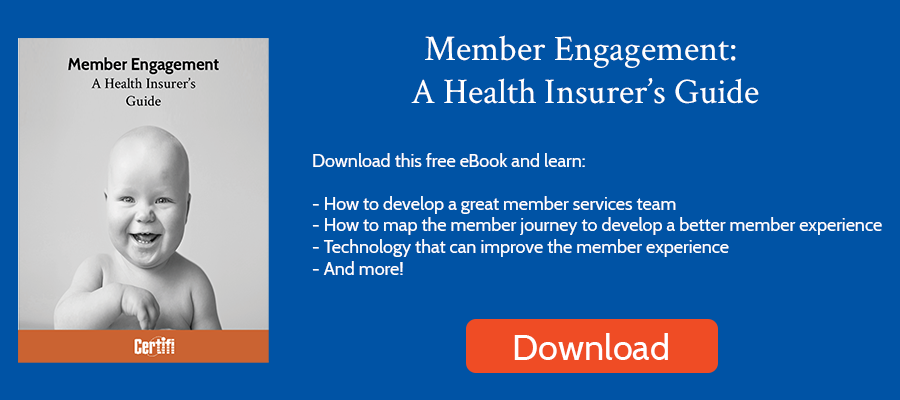Each year, the Centers for Medicare and Medicaid Services (CMS) releases proposed rules for comment before finalization. On January 12, 2022, the Centers for Medicare and Medicaid Services (CMS) released proposed changes for Medicare Advantage Plans. Today, we’ll examine the impact of three of those proposed changes. Those three include new network adequacy requirements, a return to more detailed medical loss ratio (MLR) reporting, and new marketing and communications requirements.
New Network Adequacy Requirements
We recently discussed proposed network adequacy requirements for Affordable Care Act health insurance marketplace plans. Like those plans, Medicare Advantage plans also must meet certain network adequacy standards. For the 2023 plan year, CMS is proposing that plans must demonstrate that they meet the network adequacy standards during the application process for new and expanding service areas. Today, CMS requires that new plans attest that it has an adequate provider network. CMS currently doesn’t deny applications based on the network. Beginning in 2023, Medicare Advantage applications must go through a network adequacy review.
However, those reviews may occur as much as a year before the plan becomes available. As a result, CMS proposed that plans will earn a 10 percentage point credit toward the percentage of beneficiaries residing within published time and distance standards. Once the plan is live, the credit would no longer apply. Plans would need to comply with the network adequacy standards. The idea is to give plans more time to build their networks before going live.
Impact — CMS doesn’t foresee any financial impact on plans. That said, plans would now be required to go through a network adequacy review as part of the Medicare Advantage application process.
Medicare Advantage Medical Loss Ratio Transparency Reporting
At a high level, Medical Loss Ratio (MLR) measures the percentage of premium revenue that a health plan spends on medical care. CMS requires Medicare Advantage plans to have an MLR of at least 85% in a given plan year. Plans must report MLR information to CMS. Unlike commercial plans, Medicare Advantage plans must provide a financial rebate to CMS — not individuals — if their MLR drops below 85%.
Plans were initially required to submit the underlying MLR data on a standardized report. In 2017, to streamline reporting requirements, CMS modified those requirements to require only the reporting of the MLR number and remittance amount, if any.
For the 2023 plan year, CMS proposes returning to the old way of collecting data. As they note, the current practice of collecting just the MLR and rebate data doesn’t lift any burden off of the plans themselves. Plans still need to collect the data to report their MLR and rebate data to CMS. Without the underlying data used to calculate the MLR and rebate, CMS found that they couldn’t provide proper oversight to ensure the accuracy of the MLR calculation. Another factor: Growth in the number and value of rebates. CMS pointed out that average annual rebates from 2014 to 2016 totaled $91.8 million through 21 contracts. For 2017 to 2019, those numbers more than or nearly doubled — to $204.9 million and 40 contracts. As a result, the agency feels the need to better review submissions to ensure Medicare Advantage plans don’t make errors.
Impact: CMS estimated an additional $2.3 million cost for Medicare Advantage organizations to comply with the MLR transparency reporting. Realistically, however, organizations have been capturing this data internally to report MLR numbers. Now, they’ll need to share them with CMS.
Medicare Advantage Marketing and Communications
According to CMS, there has been a significant increase in complaints related to Medicare Advantage marketing. In 2020, just over 15,000 complaints were filed, compared to nearly 40,000 in 2021. Many of those complaints were against what are called third-party marketing organizations (TPMOs) that sell multiple Medicare Advantage products. As a result, CMS plans to clarify Medicare Advantage plans’ responsibilities for TPMO activities, add a new disclaimer when TPMOs market Medicare Advantage plans and require additional plan oversight for TPMOs.
Additionally, CMS proposes a multi-language insert be provided with CMS-required materials — like enrollment forms or summary of benefits documents. That insert would inform the reader in the top 15 languages used in the US that interpreter services are available for free. The notification should state “We have free interpreter services to answer any questions you may have about our health or drug plan. To get an interpreter, just call us at [1-xxx-xxx-xxxx]. Someone who speaks [language] can help you. This is a free service.”
CMS pointed out that 12.2% of those age 65 or older speak a language other than English in the home. CMS designed this notification to help those individuals better understand the materials provided.
Impact: CMS estimates that there is an annual impact of $300,000 to print the multi-language insert.
Certifi’s health insurance premium billing and payment solutions help Medicare Advantage organizations improve member satisfaction while reducing administrative costs.



